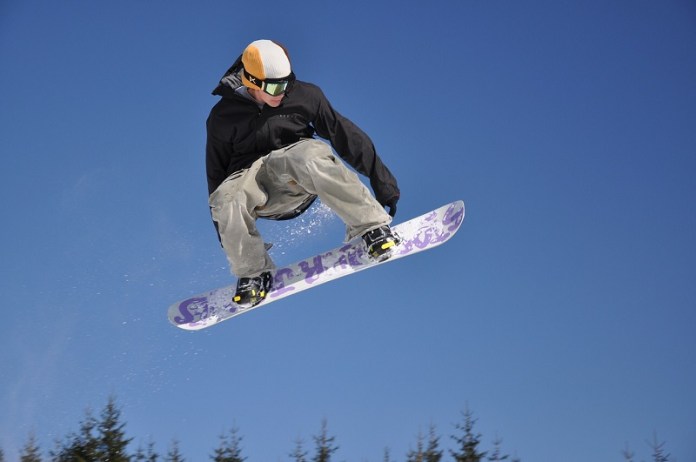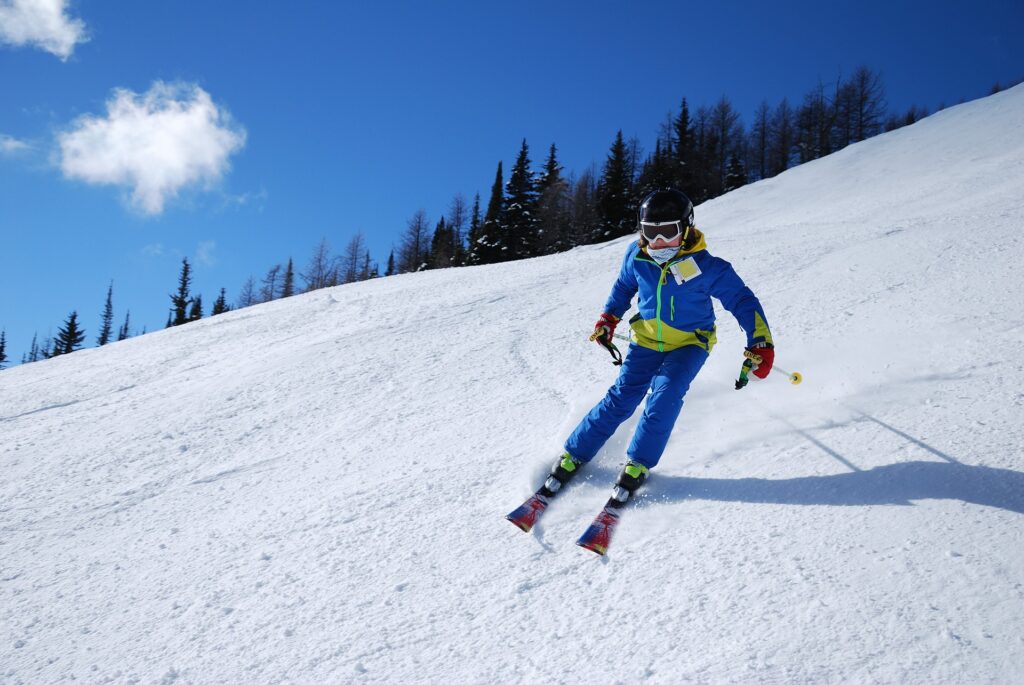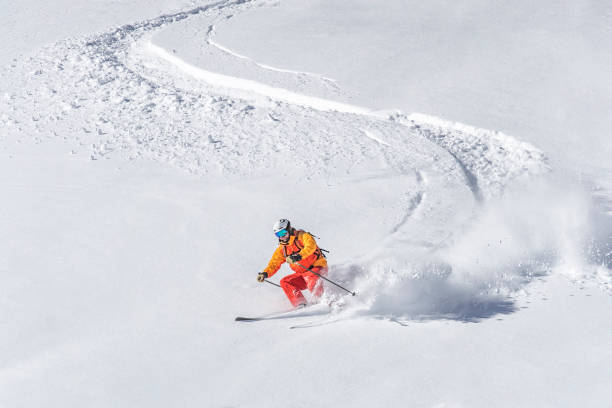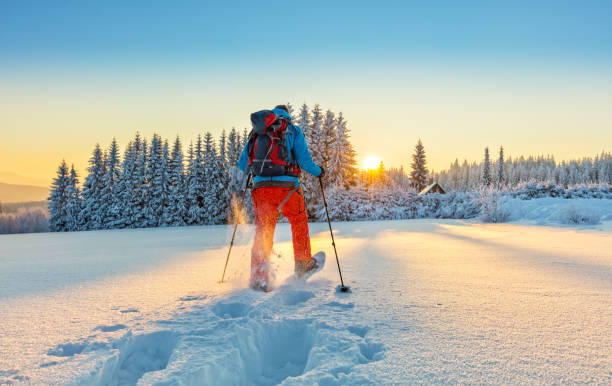Navigating through falling snow can be tough enough during skiing, and when your goggles fog up, it can severely hamper your sight. This not only leads to discomfort, but it also heightens the danger by diminishing your visibility while on the slopes. But what triggers the fogging of these ski goggles initially?
Science taught us about condensation and it’s the same thing that is happening to your goggles. When your warm breath enters inside your goggles while the cold wind brush through the outside surface, it builds the fog. But don’t worry, you can prevent your eye gear clear.
Related read: Best Ski Goggles 2021 – Top Reviews
Ways to Keep your Skiing Eye Wear Clear
Now you know what makes your pair of goggles fog, you can try these methods:
Keep Moving
Most of the newly produced goggles are designed with ventilation so that the cold air can flow through the goggle and push the warm air out to prevent fogging. All you have to do now is to keep yourself in motion so that the air keeps on breezing through the ventilation. If you can’t help but be slow with your movement especially when you’re riding the ski lift, keep your goggles cool by lifting them a bit off your face to let more cold air into the inner part of the gear.
Clear the Vents
Snow can tend to build up on top of your goggles which can block the cool air from passing through. It happens when you take a nasty fall, the snow could settle on the vents and the padding that become moisture when mixed with the hot air from your breath.
To get rid of the snow, tap the goggles lightly against a sturdy surface so that the snow falls off. Avoid using your gloves and fingers to wipe the snow off as it may rub more snow inside than disposing of it. If it’s too late and the padding has already been saturated with water, it can’t be helped, and just wait for it to dry before using it again.
Use a Helmet Equipped with Visor
Using a headgear with a visor will prevent snow from accumulating at the top of your goggles. The visor serves as a barrier between the falling snowflakes and your goggles. However, you still have to make sure that there is enough space between the visor and the vent to let the air come in and out which prevents the moisture from building
Avoid Placing Your Goggles on your Head
You may have a habit of resting your goggles on the top of your head especially when you want to see a breathtaking view without being filtered with a goggle lens. But the warm temperature of your body – including your forehead or your head where you rest your goggles, will warm the lens inside that will form fogging. To avoid this inconvenience, do not remove your goggles unless it is absolutely necessary.
Bring a Spare
When your goggles become foggy and wet you will have no choice but to wait for them to dry. Instead of risking your safety of skiing without proper vision, it’s better if you have a spare goggle to use if you can’t wait for your pair to dry. For a spare goggles, you don’t have to shell out a lot of money. Just get a decent one with dual-lens that can bring you back safely until your preferred goggles get dry.
Dry your Goggles Naturally and Properly
When you’re done with your skiing or snowboarding activity, air dry your goggles by placing them on a surface where they can dry naturally. If you are tempted to use a hairdryer to dry out the moisture and water quickly, think again. Excessive heat may affect some parts of your goggles, especially the lenses. If you are not patient with it, you better bring a spare so you can have something to use while waiting for your other goggles to dry.
Avoid Tucking Neck Warmers into your Goggles
Yes, it’s cold and you want to wrap every inch of your skin as much as possible when you go out skiing. By doing so your body will be warmed up but if you tuck your neck warmers or balaclava under your goggles to seal your face, your warm breath will be trapped inside the goggles that will form water droplets hence, obscuring your vision.
To keep yourself warm without affecting the goggle lenses, leave ample space between your neck warmer or balaclava and the goggles, with your nose slightly exposed.
Choose a Well-Ventilated Ski Mask
As you wrap any part of your skin, especially in your head area where your goggles are, your body heat will increase. Some ski masks are not designed with ventilation in the mouth area and that’s when it becomes a problem for your goggles.
When you breathe and there’s no way to exhaust the warm air through your mouth, the hot air will rise up and let your goggles take the heat which will cause the lens to fog. Therefore, it is recommended to get a ski mask with an air hole or a fabric made with mesh for the mouth area.
Be Gentle with the Lenses
If you can’t resist wiping your goggle lenses, you could at least do it with care. As mentioned earlier, it’s not good to use your glove or your fingers to wipe off snow and moisture. It may cause more damage than good to your eye gear like pushing more moisture and water to the foam of your goggles and even scratching the lenses and losing its anti-fog coating feature. So, if you really want to wipe it, use a soft microfiber cloth to clean your goggles. Make sure you pack a clean and dry microfiber with you when you ski.

Tips
To make your ski trip and experience pleasant here are some additional tips and tricks you can follow
Safety First
Riding the lift can make your goggles foggy as you are slowly moving so make sure before you go riding steep slopes, try riding a tad slow at a decent speed just to allow the airflow through your goggles to balance the temperature and remove the fog. Keep your goggles fog-free first before riding fast to avoid accidents and injuries.
Invest
If skiing is one of your regular activities, investing in a high-quality pair of goggles is surely worth it. These goggles have a number of features that you can’t get in cheap ones. Some of its features include Double-layered lenses, spherical lenses, ventilation, and most importantly an anti-fog coating, among other things.
Keep your Temperature Balanced
It’s natural you want warmth in a cold environment but there’s no need to overdo it to the point that you become sweaty. Skiing and snowboarding are physical activities that will warm your body anyway once you start moving. So, there’s no need to put layers after layers of clothing that can overheat your body to release sweat and vapor up towards your ski goggles and obstruct the clear view of your ride.





